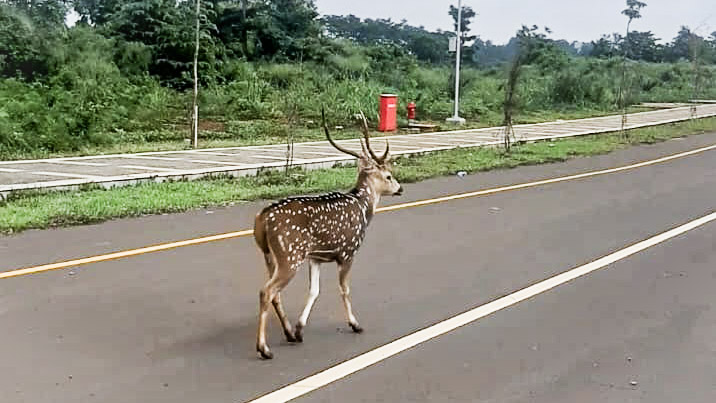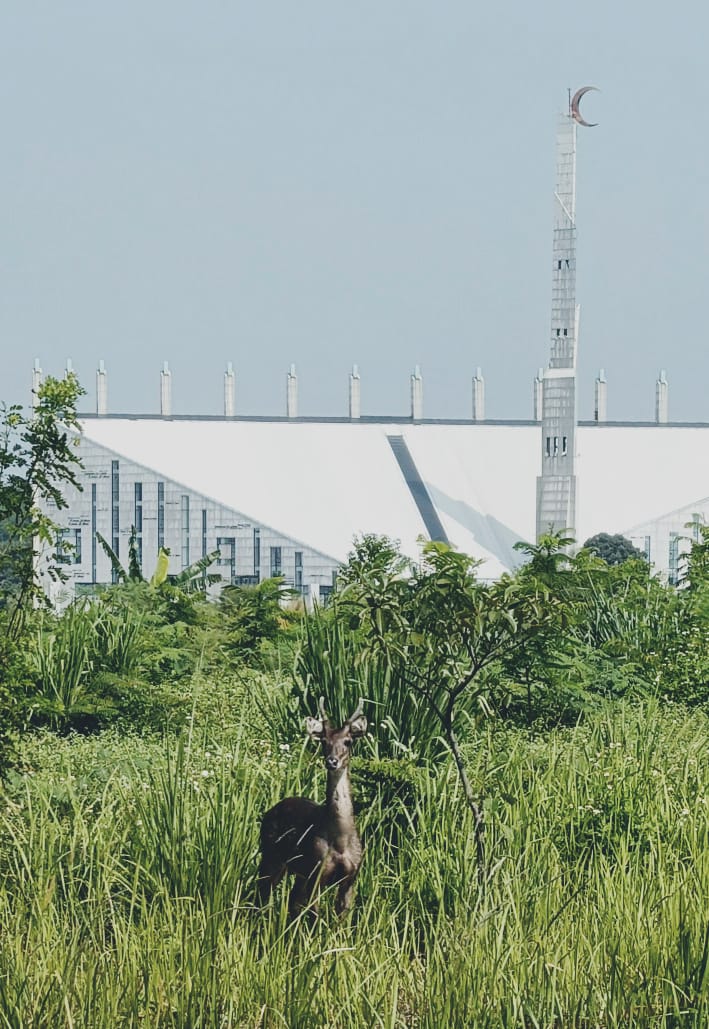UIII’s Wild Deer and a Colonial Past

Depok, November 5, 2024 — Within the verdant grounds of Universitas Islam Internasional Indonesia (UIII), a hidden community of spotted deer, locally known as “rusa,” roams quietly. These graceful creatures, marked by their white-speckled coats and cautious behavior, are not often seen, either by students or visitors. Their presence on the university campus tells a story that stretches back over two centuries, connecting this modern institution to one of Indonesia’s most historic sites: the Bogor Presidential Palace.
The origin of these deer at UIII is steeped in mystery, but their journey began far from Indonesia, in the highlands of India and Nepal. In 1814, Sir Thomas Stamford Raffles, then Governor of the Dutch East Indies, imported the first herd to Java. His goal was to introduce exotic wildlife to the lush grounds of what is now the Bogor Palace, turning it into a European-style estate brimming with nature.Over time, these spotted deer became emblematic residents of Bogor Palace, with the population growing to more than 800. As their numbers surged, some deer were reportedly given to surrounding areas, while others wandered beyond the palace’s boundaries, eventually finding refuge in the forests and plains of West Java. Some of these deer have made a home on what is now the UIII campus in Depok.
“They are the original residents of this land,” remarked Prof. Amsal Bachtiar, a senior lecturer at UIII. “We are the visitors here. It is our responsibility to treat them with respect and care. These deer deserve peace, and perhaps even a sanctuary with fields of corn.”
Unlike their cousins at Bogor Palace, who are accustomed to the gaze of tourists and live within protected fences, the deer at UIII remain wild and elusive. They shy away from human presence, emerging only when they feel safe or when food becomes scarce. “They live wild, but they don’t bother us,” said M. Nurhidayat, a campus caretaker. “Sometimes they eat from our cornfields, but that’s fine. We want them to thrive.”
Their quiet existence on UIII’s campus is a reminder of the land’s deep-rooted history. Though the university is a new institution, the deer link it to a colonial past that has shaped the region. As UIII grows, the question of how best to protect these animals in an ever-changing landscape looms large.
Talk of creating a formal sanctuary for the deer is gaining momentum, inspired by the protective measures at Bogor Palace. For now, though, the deer continue to live freely on campus, coexisting with the academic life that thrives around them. They are a reminder that while the world constantly evolves, certain legacies endure.
